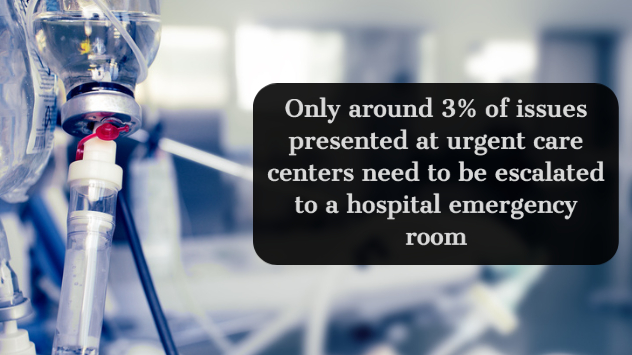Few things in life are scarier than a sudden illness or injury. The situation grows even scarier if the accident or illness strikes outside of business hours when it’s impossible to see your regular physician. It can be easy to panic in these situations, but staying calm is critical to getting the best possible care. You’ll need to choose between visiting the emergency room or an immediate care facility quickly. Read on for some tips on choosing between these two options so that when the time comes, you’ll know what to do.
Evaluate the Options
Emergency rooms are open 24 hours a day, 365 days a year to deal with life-threatening emergencies. Once your condition is stabilized, you’ll likely be released into the care of your regular physician. Many insurance plans will cover a portion of emergency care, but you will likely still have a deductible or co-payment for the visit. It’s crucial to keep in mind that many health plans won’t pay for ER visits if they determine the cause to not be a “true emergency.” While this shouldn’t dissuade you from going to the ER, it is something to consider when weighing your options.
Immediate care facilities have extended hours, but they are not open 24 hours a day. They are equipped to deal with minor medical traumas and illnesses and are in place to provide treatment for less serious conditions that may arise after hours. Your co-payment or deductible will likely be significantly lower than those of an ER visit. Most health insurance plans include these facilities in their networks.
How To Choose Emergency
A good rule of thumb is that if you’re ever concerned enough to consider going to the ER, do it. It’s always better to be safe than sorry. Still, here are some of the conditions that warrant an ER visit:
Intense chest pain, Emergency if accompanied by sweating or breathing difficulties
persistent shortness of breath
severe pain, especially in the abdomen
fainting
difficulty speaking, confusion, or altered mental state
weakness or paralysis
high fever in newborn babies
head and eye injuries
persistent bleeding
seizures
Immediate care clinics can handle a variety of illnesses or conditions that are not necessarily life-threatening. Some examples include:
Fevers without rashes
minor trauma, like sprains
painful urination
diarrhea
sore throats/ear pain
vomiting
minor cuts or scrapes
Wait Times Emergency
Keep in mind that if you visit the ER without a condition that is seen as life threatening, you are likely to face a long wait time, as patients are treated in order of urgency. It may be faster to visit an immediate care facility. While you wait in either facility, you may be able to call a 24-hour nursing line, a service offered by many health insurances. These professionals will often be able to direct you to the correct facility.
Never take chances with your health. It’s better to make a decision and go get help immediately than sit around and try to decide what facility to go to. Following your gut can’t be overruled. If something seems truly serious, head to the ER. If not, you can still expect great care at an urgent care clinic.
